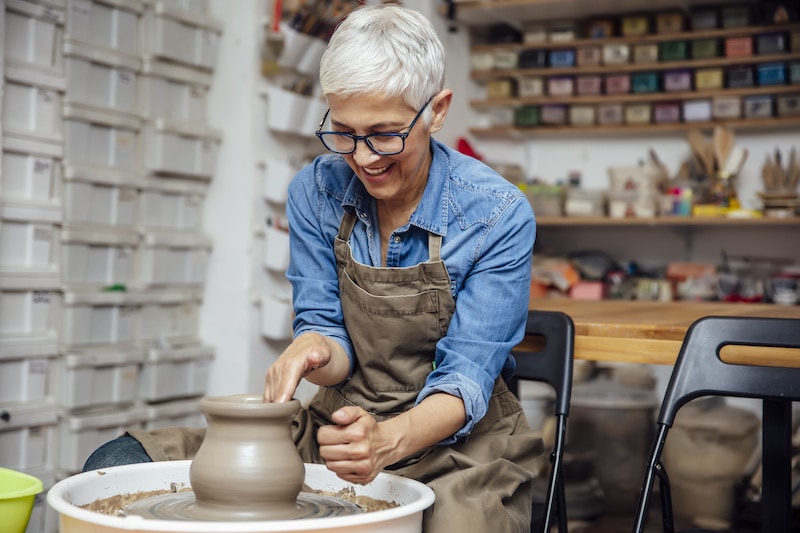Telehealth vs telemedicine: What's the difference?
Despite often being thought of as the same thing, telehealth and telemedicine actually mean incredibly different things. Often used interchangeably, they should not be confused with one another.
The confusion is to be expected, especially with both terms being thrown around more than ever now. The COVID-19 pandemic greatly affected the world of telehealth and telemedicine with more places making the shift to provide such services amidst lockdowns and overloaded hospitals.
The CDC stated that very early on in the pandemic, in-person healthcare visits declined by nearly 60% across the United States. But telehealth visits rightfully increased, accounting for nearly 30% of all care provided.
This wasn’t always easy, however. Prior to the pandemic, physicians were often required to have special licensure to provide telehealth care to patients. However, currently, 18 states have waived such requirements. It’s not clear if this is temporary or not, but there is a lot of push to make virtual care a vehicle that sticks around long after the pandemic.
The ability to make such shifts has been an amazing way to ensure patients across the country get the care they need. These may include therapy, prescription reviews, or consultations.
So today, we're going to clearly define these terms, explain why each is so important in healthcare, and discuss why we believe it’s here to stay.
What is telehealth and why does it matter?
The use of the internet has changed our lives in so many ways—both positive and negative. But the pairing of technology and healthcare has completely transformed how we can deliver information and care to patients.
Telehealth is a revolutionary way to access healthcare services remotely and manage your medical needs. With the use of digital information, computers, or mobile devices, one can gain quick and easy access to information and applications that help provide better support with treatments and healthcare management.
The benefits of telehealth include:
- Making self-management easier and more convenient
- Improving communication between patients and their care team
- Making healthcare services more accessible to patients living far away or who have limited mobility
- Providing easier access to healthcare specialists
While telemedicine is centered around patient care, telehealth focuses on using technology to better manage health, access data, and track care plans. Here are some great examples of how telehealth can be used in real life.
The added convenience of virtual doctor appointments.
Doctors can provide online consultations for their patients. This is especially helpful if you need a last-minute appointment or live far away from the doctor's office.
These virtual visits allow doctors and patients to access information by video conferencing with one another either through an app on your phone or computer that allows for live video chat.
Things like Doctors on Demand can allow for quick virtual visits as opposed to making a trip to urgent care. People can virtually connect with a doctor for things like rashes, common viral infections, prescriptions refills, or other minor concerns.
This can allow the doctor to assess a patient's needs quickly, send an antibiotic to the pharmacy, and save a ton of time for patients and providers alike.
Remote health monitoring for patients with chronic conditions.
Patients with chronic conditions can now use technology to monitor vital signs like blood pressure, blood sugar levels, heart rate, respiratory rates, and oxygen levels from the comfort of their own homes.
This is a great way to help individuals avoid unnecessary emergency room visits or procedures that could have been avoided if care had been managed appropriately.
Telehealth is an excellent way for patients and doctors to interact using technology to manage a medical condition or monitor a chronic disease at home, where the patient feels most comfortable. It also allows patients and physicians to have the most up-to-date and accurate data to adjust treatments accurately and quickly.
Patients modernize their care with portals and apps.
Patients can download apps or use online portals to access their own health records, schedule appointments, refill prescriptions, and communicate with their healthcare providers.
These are great tools that allow patients to manage their medical information on the go from any location, at any time. In some cases, this also means their data is centralized so it’s easier to access and send to other providers for second opinions or ongoing healthcare maintenance.
More convenient correspondence between physicians.
Patients can log in to a patient portal and message their physician's office with questions or concerns. This allows for more timely communication between patients and providers.
In addition, doctors need to speak with other doctors often to discuss a patient's case, health management, and other factors. Telehealth allows them to quickly and securely share and access sensitive patient information in a secure platform and respond in real-time.
How does telemedicine differ from telehealth?
Telemedicine is a subset of telehealth that refers solely to providing healthcare services across long distances. For example, people living in remote areas or those not able to easily leave their homes due to mobility issues.
It still involves using technology like video chat or wireless communication to provide healthcare services from a healthcare provider, but with more emphasis on remote areas that do not have access to in-person healthcare. Particularly, access to specialties and other complex health care.
The benefits of telehealth and telemedicine are great. Thanks to technology, it has never been easier to monitor your health or receive quality care, all from the comfort of your own home or mobile device.
Ōmcare plays a big part in both telehealth and telemedicine. Our at-home device allows quick access to providers and monitored and secure disbursement of medications without the need to drive to a pharmacy or manage individual prescriptions.
If this sounds like something you need, please don't hesitate to reach out to us and get started on improving your or your loved one's personal healthcare management.
4 best automatic pill dispensers for seniors at home
Are you having trouble getting mom to take her meds? Don’t fret—there’s a device that can help.
Automatic pill dispensing devices are well-designed to help those with chronic diseases where successful medication management is often the key to better health. In addition, it helps those who find it difficult to remember to take their pills on time. In this post, we will discuss the best automatic pill dispensers available.
Things to consider when choosing an automatic pill dispenser
Before you purchase a new pill dispenser, there are a few key things to consider that could sway your decision. Let’s walk through different factors to help you decide which product is best for you.
-
Medication compliance
A pill dispenser will always hold enough pills for their regular doses, so they’ll never run out.
-
Size & design
It's important that your automatic pill dispenser fits nicely on a nightstand or bathroom countertop. You want it to be accessible and easy to use.
-
Programming
Easy-to-use pill dispensers are vital to getting the most benefits out of the device. They shouldn’t require extra programming or tech-savvy users.
-
Features & capabilities
Many of these devices come with alarms, timers, lockable compartments, and even tracking abilities.
-
Price
The price range for pill dispensers varies depending on the brand and features you choose to include in your machine. Be sure that it's within your budget before making a purchase.
-
Product reviews & ratings
Don't just go with our list, research other trusted sites to find out what others think about each product.
The best automatic pill dispensers
There are many types of pill dispensers that can help those who take a lot of medications every day, making management difficult. These devices range in price, complexity, and security features but all come in incredibly handy for medication management and improving medication adherence. Here's a list of the best automatic pill dispensers for seniors.
MedCenter System With Alarm
Despite being less high-tech than some of the other medication dispensers out there, the MedCenter 31-Day pill organizer and reminder system gets the job done. It's incredibly user-friendly, making it a simple solution for seniors living alone who need some assistance managing and remembering their meds without the fuss of technology.
The MedCenter System allows them to put a whole month's worth of medication into the system, pull out each day's pills, then have a recurring alarm (or multiple alarms) for taking their pills every day at the appropriate time. The one downside is that it has to be manually refilled every month. However, it still saves time, energy, and the pain of having to organize pills every single day.
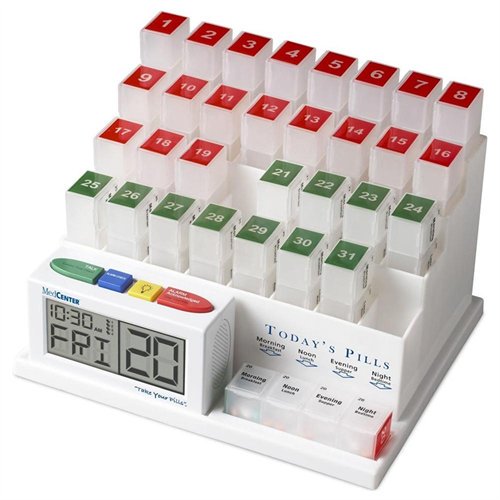
e-Pill MedSmart Plus
The e-Pill MedSmart Voice Pro is a step up from the MedCenter in that it has added security measures with a lock and key to keep out anyone who shouldn't have access to the meds. Also, it can be loaded by a caregiver, and the patient can only have access to pills at their appropriate time. It is Bluetooth enabled and can connect to a mobile app to get easy reminders, alarms and track medications throughout the month.
This pill organizer and dispenser is ideal for seniors who want to live more independently and those with caretakers who want an easy solution to help their patient manage their medication on their own. It's also perfect for those who are hard of hearing as it can have up to 9 alarms throughout the day, paired with a loud voice notification of "it's time to take your medication" and blinking lights.
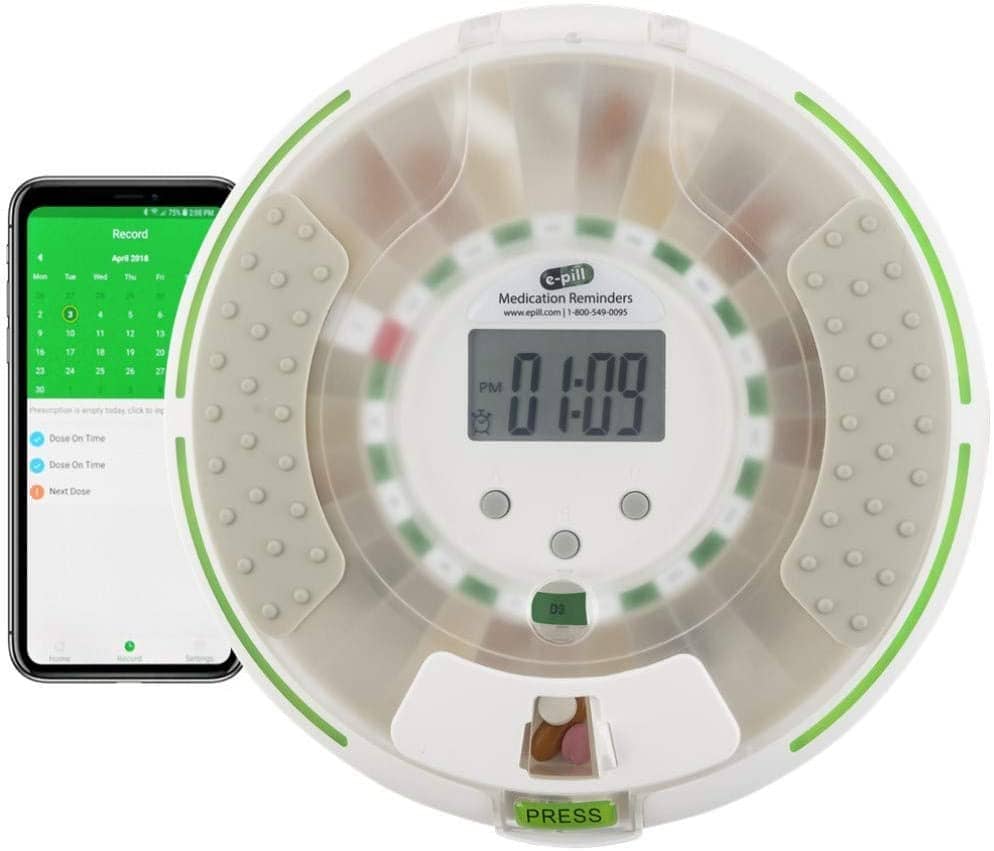
Pria Automatic Pill Dispenser
Pria is a combination medication assistant, video chat, and automated medication dispenser in one. It holds up to 28 days of pills (with 10 in each section) or two weeks if you have morning and night doses. The device gets loaded each month with all the necessary daily pills, then alarms and notifications can be set up and paired with a mobile app.
The application allows family members, caregivers, and physicians to gain access, see that medications were taken, and make necessary adjustments based on results. Users can also get support via the built-in video chat system, and physicians can also reach out via the call feature.
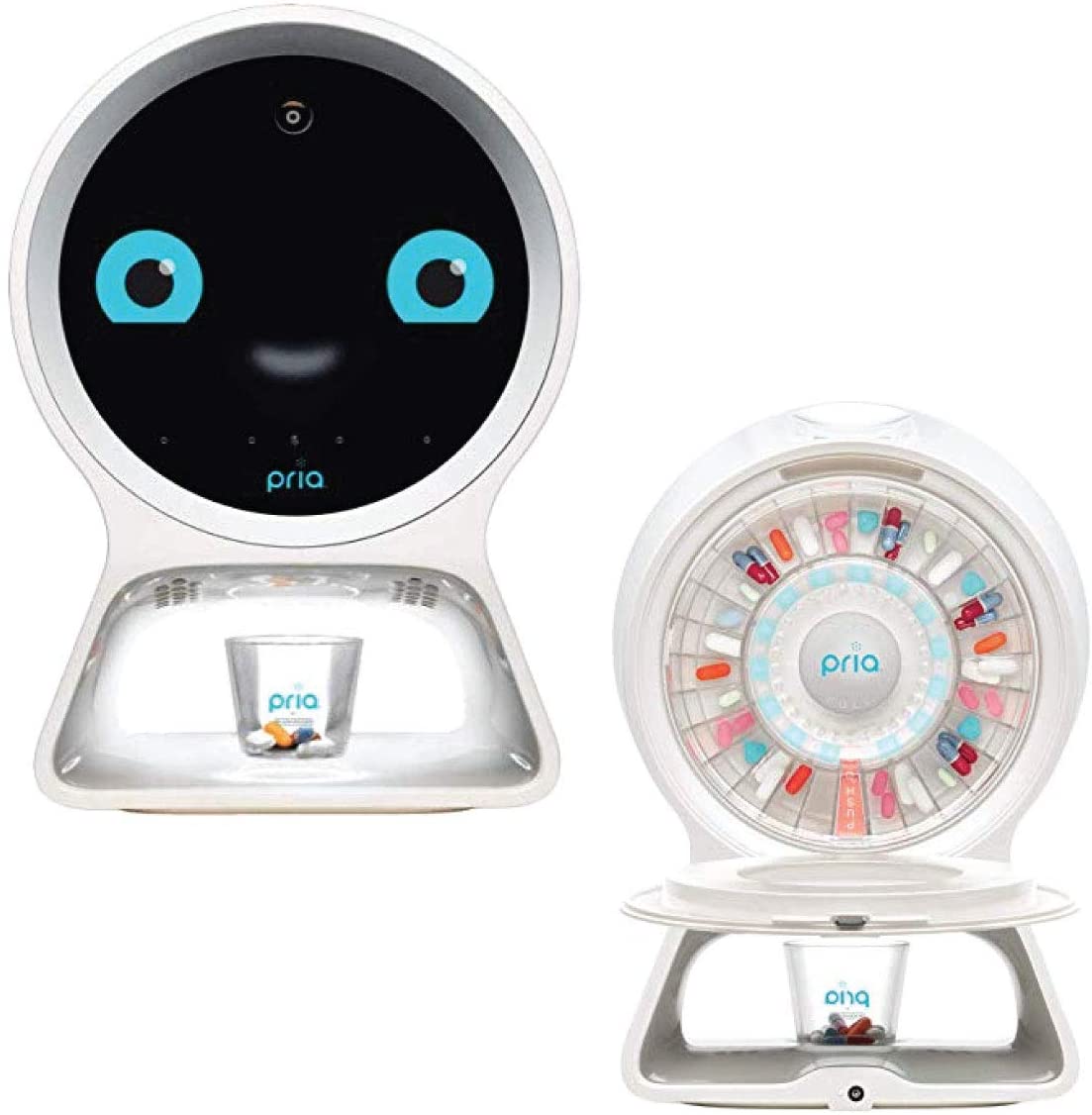
Ōmcare's Home Health Hub®
Ōmcare's Home Health Hub® has combined the convenience of prepackaged medication with immediate access to healthcare providers into one simple package. Not only is medication prepackaged in easy-to-load packs, but they are shipped right to the user's door when needed.
The video feature on our Home Health Hub allows for the user, family members, caregivers, and physicians to check in regularly to allow treatment, medication adjustments, and maintain a virtual relationship. Video check-ins can help ensure that medication is being taken and provide family members with peace of mind.
There are a lot of benefits to automatic pill dispensers. Although they can be expensive upfront, you get what you pay for when it comes to quality and safety.
Keep your loved ones safe, on track, and help manage their chronic illnesses with ease. Reach out to Ōmcare to get started on the next level of medication management with a user-friendly automated pill dispenser.
6+ telling benefits of medication synchronization (for patients)
Medication synchronization helps ensure someone doesn’t miss a dose. But it goes even beyond that; there are many advantages to medication synchronization in addition to limiting trips to the pharmacy. Today, we'll talk about what med sync is, its telling benefits, and why it's so important.
What is medication synchronization and how does it work?
Simply put, medication synchronization is the process of filling prescriptions and collecting them on a single day each month instead of having prescriptions filled as soon as they're written or collected from the pharmacy as patients need them throughout the month.
Instead, all prescriptions are filed one time each month, drastically reducing the number of trips to the pharmacy and added convenience for people taking multiple prescriptions.
When prescriptions are filled and picked up on one day each month (as opposed to when they're refilled), it creates peace of mind for everyone involved. For patients, it means they never have to worry about running out of a needed medication because they can't keep track of all the varying refill dates.
By syncing up 28-day, 30-day, 60-day, and even 90-day scripts, there's a consistent cycle of refills happening at all times. This benefits the pharmacy because they have fewer prescriptions to fill all the time (and eliminates people forgetting to pick things up) which can lead to better adherence data for them as well.
What kinds of medications can be synched?
Patients who take multiple medications for any condition can benefit from medication synchronization. Even patients who take a single prescription that requires regular refills will see benefits, as it reduces trips to the pharmacy and eliminates any concerns about running out of medications due to timing issues.
How does it work?
Pharmacists play a big part in managing prescription syncing. They take the time to review patient prescription lists and accurately formulate a plan to get them synced up. The pharmacist then does a few partial fills to sync up all meds to a single date. Often, they'll also schedule monthly or bi-monthly follow-ups for patients to discuss the medications and ensure everything is on the right track.
What are the benefits of medication synchronization?
The obvious benefit is that patients don't have to go to the pharmacy every month, which reduces stress and eliminates a potential source of anxiety. However, because it's such a big part of what pharmacists are trained to do, medication synchronization also ensures accuracy and attention to detail. It also improves patient health by ensuring they're getting the proper medications at the right time.
Medication synchronization is just another way that pharmacists are making prescription management easier for patients everywhere.
All the benefits of medication synchronization include:
- Eliminating unnecessary repeat trips to the pharmacy each month, which saves time and money.
- Minimizing confusing or conflicting refill dates.
- Reducing delayed or missed doses due to missed refills.
- Pharmacists have more insight and control into patients' medication lists, preventing contraindications, duplicate drugs, and other issues.
- Ensuring the right drugs work with the others and that the proper treatment plans are given.
- Improving medication adherence
- Giving caregivers peace of mind
Medication synchronization is not a new concept. Still, it wasn't until recently that pharmacies started making medication synchronization standard practice.
The average person visits a pharmacy 35 times per year but only sees their doctor four times. By syncing up scripts, pharmacists can cut this number by more than half and allow more convenient prescription refills. Many companies offer mailed prescriptions and automated subscriptions and can help medication adherence rates skyrocket.
Patients don't have to worry about going back and forth between pharmacies anymore—pharmacists make sure they're synchronized, so doctors' instructions are followed as intended. Nor do they have to wait for a pharmacist to reach out for medication refill reminders. And that's a win-win for everyone.
For even more automated prescription management and administration, check out Ōmcare's Home Health Hub. The Home Health Hub offers easy, fast medication management and administration, plus free med delivery in monthly rolls that bundle all necessary medications into one convenient package. Reach out to learn more!
Automatic pill dispensers for people with Alzheimer's: simple options for 2021
Remembering to take medication can be difficult for anyone, but especially those in the early stages of Alzheimer's. Alzheimer's is a progressive disease that affects mental function and memory, making it difficult to do daily tasks, including taking medication.
However, there are some simple ways to ensure people with Alzheimer's take their medication on time, every time, without constant supervision.
Automatic pill dispenser for Alzheimer's patients
Automatic pill dispensers are one of the greatest ways to improve medication adherence, prevent double dosing, and ensure you or your loved ones take the right pills, every time. Pill dispensers have come a long way from the 7-day pill organizer box, and now come with all various features that make it as easy and automated as possible.
Of course, someone with Alzheimer's is not always going to be able to manage their own medication, even with an automatic dispenser. But there are a few simple options to choose from depending on their level of cognition and independence. Below are good options if you are looking to purchase an automatic pill dispenser.
Easy-to-use pill dispenser
Some dispensers require a somewhat tech-savvy end-user. However, there are a few pill dispensers that are very user-friendly and allow people in the early stages of Alzheimer's to remain independent by managing their own meds.
MedCenter Monthly Pill Organizer
Although this isn't exactly an automated pill dispenser, this simple alarm clock pillbox is super easy to use and is a more advanced pill organizer. It requires very little technical knowledge and can be easily loaded every month by a helper or home health aide, and then alarms will ring each day to alert the user to take their meds.
Alarmed pill dispenser
For a more advanced option, this alarm pill dispenser is highly user-friendly and signals a loud alarm or flashing light to alert users with both memory and hearing impairment that it's time to take their medications. MedReady Automatic Pill Dispenser
The MedReady automated pill dispenser is a simple design but works just as effectively as some of the high-tech versions. The basic design allows users to load 28 days of pills in the locked case, holding up to 5 large pills or 10 smaller pills. In addition, the device can have up to 4 alarms set per day, and they can run for 30, 45, 60, or 250 minutes to allow users ample time to hear and respond to the alarm. It also comes with a rechargeable battery so that it can be taken on the go.
Also, their upgraded versions include a red light for the hearing impaired, a land-line connection to alert emergency contacts of a missed dose or a wireless plan that alerts the MedReady website of missed doses and other alerts.
High-capacity pill dispenser
The Hero automatic pill dispenser can hold up to 90 days worth of medication and also includes all of the benefits mentioned above, such as ease-of-use and alarm capabilities, but with more technology and support included in the monthly package. It will also notify caregivers or emergency contacts if a dose is not taken and the alarm is never turned off. This is essential to providing proper medication dispensing, which is also tracked in its automated medication adherence tracking.
Smart pill dispenser with locking capabilities + more
Last but definitely not least, the Ōmcare Home Health Hub offers all of the above plus telehealth capabilities. Not only can people with Alzheimer's ensure they take their meds on time thanks to alerts, the automatic pill dispensing, automated medication delivery, and ease-of-use, but they can converse with their healthcare support team right from the device.
They can also connect with family members and other caregivers, which can be used as an additional way to improve medication adherence, particularly with those with memory issues. Speaking to a nurse every time they take their meds or review their meds each month creates a solid feedback loop to keep medication on track and prevent dangerous double dosing.
Overall, Ōmcare has the best automatic pill dispenser for Alzheimer's patients if you're looking for a solid, fail-proof solution. To find out what we can do for you or your patients today, contact us here.
Cost of home care: Average out of pocket costs in 2022
Many people prefer to live at home as they age, for as long as they can. Aging in place is a term defined by the CDC as the ability for one to live in their own home safely and independently, regardless of age or income. Home is truly where the heart is, and for many, it brings a level of comfort that an assisted living community just can’t. However, aging often requires more attention and care when it comes to a person’s health. That's where in-home care comes in.
In-home care is an option for seniors who require assistance in their homes as they age in place. This care is delivered by trained aides who help individuals with ADLs (activities of daily living), IADLS (instrumental activities of daily living), and more day-to-day management of their lives and well-being. As great as the idea sounds to have a home health aide, the costs can be incredibly high. Keep reading to discover the true cost of in-home care and how to determine what the out-of-pocket costs may be.
Types of services provided by home healthcare aides
There are several types of in-home care services. These services—or some of them, depending on your specific needs—will be provided if you decide this is the right choice for yourself or a loved one.
Examples include:
- Personal hygiene and care assistance for bathing, dressing, grooming, and brushing teeth
- Assistant with using the bathroom
- Meal prep and grocery shopping
- Light housekeeping, such as laundry, dishes, dusting, cleaning
- Running errands and helping with around-the-house tasks
- Meal preparation and serving/feeding
- Providing transportation
- Medication management and administration
- Home safety modifications and management
- Monitor vitals and record a client's condition each day
- Offer companionship and socialization
There are other services that home health aides may provide as well. Oftentimes, familial caregivers can also manage many of these tasks. However, it can become quite a burden or inaccessible if they live in different areas. So hiring a home health assistant often becomes the best choice.
The cost of home care today
By 2030, the number of people aged 65 and older will reach 71 million. Many of these older adults will require personal care services, such as assisted living communities and skilled nursing care in the home. And this number won't be slowing down anytime soon; the need for in-home care will only grow from here, both via demand and cost.
That leads us to our next point. Assisted living facilities and home health care services are both expensive, and deciding between in-home care vs. care in a facility can prove challenging. We hope that this cost breakdown will help you determine which is best for your needs.
A few fast facts about the cost of in-home care:
- The majority of home care agencies charge by the hour vs. monthly contracts.
- Location, level of care, and licensing requirements can all drastically affect the cost of in-home care.
- The demand for in-home care is surging, and the cost rose nearly 3.80% from 2004 to 2020.
- Currently, for full-time (40 hr/week) in-home care for seniors, the median monthly cost is almost $4,500.
According to the Genworth Cost of Care Survey 2004-2020, the current annual cost for a private room in a nursing home is $105,000+. Assisted living facilities, home health aides, and home care homemakers are nearly half the cost sitting around $50,000 to $55,000 annually. That's a drastic jump, thus why in-home care becomes a very viable option for many who would choose to age in place over uprooting to a nursing home.
How much will in-home care cost in the future?
In-home healthcare costs can change drastically depending on several factors—location is one of the greatest. For example, Washington state is one of the most expensive states at $31.16/hr, but Louisiana is one of the lowest at $17/hr. The Cost of Care Survey takes a deeper dive into the hourly, monthly, weekly, and monthly rates of in-home care for the next 50 years.
The current median hourly rate for a Home Health Aide in the U.S. stands at around $24/hr. This number will grow dramatically over the next few decades (at 3% inflation) as such:
2030 — $32.25/hr
2040 — $43.35/hr
2050 — $58.25/hr
2060 — $78.29/hr
2070 — $105.21/hr
As you can see, in 50 years, when many young college grads will be reaching the age of needing long-term care, they can expect to pay nearly $100 an hour for an in-home care aide. However, we know advancements in technology and healthcare continue to make it easier and more realistic to live longer and healthier lives.
For continued support, while aging in place, reach out to Ōmcare. Our Home Health Hubs make it easier than ever to manage medications at home and prolong or replace the need for an in-home aide. Our easy-to-use system can make medication administration fast, easy, and safe while allowing for remote telehealth visits and connecting with loved ones. Reach out today for more information.
6 of the best medication delivery companies compared (2021 update)
Today we can get just about anything delivered. Do you want Mcdonald's delivered at 2 am? No problem, order DoorDash. Do you need to furnish your new home but don't have a truck to haul furniture? No worries, Slumberland will deliver everything to your door (and carry it inside)! But what about medication?
Pharmacies have long offered prescription delivery services but with less-than-convenient times and offerings. Thankfully, that has changed significantly in the last decade to the point where there are dozens of prescription delivery service companies to choose from. Choosing one can be overwhelming, so we thought we'd help by narrowing down a list of the best medication delivery companies in 2021.
PillPack
PillPack is one of the most popular names in prescription delivery, and even more so after being purchased by Amazon Pharmacy in 2019. PillPack has changed the game when it comes to medication management. They offer free home delivery, and users only pay for their med copays, PillPack takes care of the rest.
After signing up, users send in their medication details, then PillPack works with their doctors or pharmacies to sort out all prescription and non-prescription items (like vitamins and supplements). Then, everything is delivered in conveniently packed daily pouches. It's easy, affordable, and convenient.
Capsule
Capsule currently only delivers to 13 major cities around the country, including the Twin Cities (and their surrounding zip codes). Still, they are well on their way to becoming one of the most used prescription delivery services around. Capsule offers same day delivery of your prescriptions, even if you're a new customer.
They have pharmacists who care and want to make it as easy as possible for anyone to get their medications delivered to their door with no hassle. Capsule can become your new pharmacy with the help of your doctor and accepts any insurance.
ExactCare
ExactCare is one prescription delivery service that goes beyond just convenient home deliveries. They also partner with nursing homes, home health workers, and manufacturers to create a more well-rounded medication management system and help improve patient health outcomes.
In addition to packaging and delivering medications to your home, ExactCare also provides comprehensive support services to ensure your medication is managed and adjusted to be as effective as possible, especially when treating chronic diseases.
ZipDrug
Recently merged with IngenioRx, ZipDrug is making huge advancements in medication adherence and prescription care for patients with chronic conditions. However, they are opposed to common industry issues like Medicare Advantage patients being prescribed the most expensive option, more recurring medications, and paying way too much in general. So, ZipDrug steps in and connects people with the best, most affordable pharmacies in their area who work best for their health plans and their care.
They even reward pharmacies who take steps toward improving medication adherence in patients who get drugs delivered by ZipDrug. It's a win-win for everyone and provides beneficial pharmacy services on the go.
DivvyDOSE
DivvyDOSE is very similar to PillPack since they package all of a patient’s medications into one neat daily pouch that you can just open, take your meds, and go on living your life without worry. The convenience factor is huge, not to mention free delivery, free packaging, and they accept all major health insurance plans.
With DivvyDOSE, you'll never run out of refills because they remind you and take care of contacting your doctor. They will also include a small medication card that fits into a wallet, so no matter where you are, you always have your most up-to-date script info.
Simple Meds
A small team with a big purpose, Simple Meds is adding to the top contenders changing how prescription drugs are managed for good. No one should have to worry about how or when their prescriptions are getting filled. With Simple Meds, members get simple, easy medication management with no hidden fees.
 Finding the Best for You
Finding the Best for You
Many similar companies are paving the way for better and more advanced medication adherence efforts. Most companies will work with your insurance company, get your prescriptions filled, and deliver them right to your door, hassle-free. But these companies mentioned above have proven to be some of the best in the industry, and we're excited to follow where they go.
Of course, we'd be remiss not to mention Ōmcare's efforts to improve medication management as well. For example, our convenient prescription delivery service ensures our Home Health Hub stays fully loaded with proper daily dosage in easy-to-open pouches, shipped out every single month. For more information on how Ōmcare can help you or your loved ones get their prescription dispensed on time with convenient delivery, reach out today.
Healthcare worker shortage forces creativity to deliver care more efficiently
There is currently a massive shortage of healthcare workers across the nation, at all levels of care. However, the extremes are hitting facilities, like nursing homes and assisted living facilities, which rely on lower or non-credentialed health care workers to assist nurses and doctors day-to-day.
Some lower credentialed positions struggling to stay staffed include medical assistants, home health aides, and pharmacy technicians. The National Community Pharmacists Association (NCPA) conducted a survey in June 2021 that showed some astounding statistics about the state of the nation’s pharmacies.
Currently, four in five pharmacies are struggling to staff enough workers to handle patients, deliver prescriptions, and simply manage the cash registers. There are many reasons for this including people leaving positions (during the pandemic) where they are exposed to more people or finding work elsewhere for more pay, but also the growing aging population is heavily affecting the need for healthcare workers.
What is driving the healthcare worker shortage?
The baby boomer population makes up nearly a quarter of the entire population of the United States. This population is now reaching the age where they have higher healthcare needs, and it’s not slowing down any time soon.
The United Nations put together a document on world population aging, and there are some pretty astounding statistics regarding growth and trends.
- By 2050, people 60 and older will make up 25% of America's population.
- The global population of people 80 and older is projected to triple between 2017 and 2050.
- The U.S. birthrate dropped by 4% in 2020, and it's expected by 2030, older persons will vastly outnumber children ages ten and under.
As these older generations continue to grow, the need for healthcare does as well. And with many people leaving the healthcare industry and not being replaced with incoming workers, the shortage continues.
How can the industry combat these shortages?
One of the biggest issues with these lower-credentialed jobs is low wages (not to mention the competition from other industries right now). Based on labor statistics data in the state of Minnesota, a personal care attendant (PCA) is one of the most in-demand jobs, but the median annual wage is $28,562 per year.
The government is doing what it can to help with the healthcare worker shortage, but that does not seem to be enough. A recent proposal from Minnesota Governor Tim Walz is urging the healthcare industry to increase wages for home care workers. Unfortunately, the care service clients with PCAs receive are funded by Minnesota’s Medicaid program. This means the rate the state will pay for services is completely dictated (and capped) by the state Legislature—these low rates barely cover the cost of care. So how will they ever be able to pay home health aides more?
Another way the industry is combating this huge shortage is by hiring people with more experience working in the healthcare field, but for lower-level positions. A new market has popped up for those who have been retired from their career of being a nurse, doctor, or medical assistant and want to get back into the workforce as an on-call position that will work within certain hours they can accommodate.
That trend may become one of the more popular ways to fill the gap in lower-level healthcare workers, but it's not an ideal situation due to higher costs and unnecessary credentials. There are other ways to fill these gaps in the health care workforce and help alleviate the worker shortage.
One way is to introduce technology and other automation to ensure at-home care is never sacrificed due to staffing shortages, for example, technology services like Doctor On Demand. Doctor on Demand allows patients to quickly and easily get standard checkups and prescription refill appointments over video chat, from the comfort of their homes.
How Ōmcare helps
Ōmcare is a hardware and software solution that helps alleviate the need for in-home nurses, especially for older individuals who need consistent medication management. After installing a Ōmcare Home Health Hub in a patient’s home, an uncredentialed worker can make calls, cheaply and efficiently, multiple times a day to walk a patient through medication management.
The Ōmcare Home Health Hub allows for health workers to scale their time, instead of running from home to home, while still providing high-touch and seamless care. If you’re interested in integrating a Home Health Hub into your patients' homes and alleviating the burden on your care staff and HR hiring team, contact us today for more information.
Risk adjustment: what is it and how does it impact Healthcare for 2022
Risk adjustment is one tool that helps determine insurance eligibility and premiums, as well as reimbursements for providers. It allows insurance providers to compare members and determine which ones have higher risks of developing certain conditions or require more care than others. This information can then be used by regulators for setting appropriate reimbursement rates for different providers.
So, beyond that what exactly is risk adjustment? Why does it matter? And why will it continue impacting the way we approach health costs over the next several years?
What is the purpose of risk adjustment?
The official definition of risk adjustment, according to HealthCare.gov, is “a statistical process that takes into account the underlying health status and health spending of the enrollees in an insurance plan when looking at their health care outcomes or health care costs.”
To understand risk adjustment, you first need to know how it is calculated. The calculation of an enrollee's risk score begins with their demographics and HCCs; a.k.a. the medical codes for their conditions.
To make sure that insurance providers are reimbursed fairly and accurately for services rendered, every member ends up with a unique risk score based on various demographic factors (such as age) combined together from predefined categories called Hierarchical Condition Categories or "HCC".
The demographic factors used to calculate risk scores include:
- Age
- Sex
- Socioeconomic data
- Disability status or eligibility
- Medicaid eligibility
- Institutional status (nursing homes, inpatient care, etc.)
The demographics are paired with an enrollee's list of diagnoses. These codes have all been assigned a specific value for risk adjustment. They're part of the standard ICD-10 coding system used in healthcare -- which assigns codes to every diagnosis based on many factors like severity, location, and condition.
HCCs with lower numbers are higher in severity on the scale and thus would raise someone's risk score. For example, diabetes that is well-managed with no complications would have an HCC of 19, while diabetes in full ketoacidosis would be an HCC 17, which is more severe than the 19. These numbers, paired with the demographic information, would determine how much risk adjustment is necessary for this enrollee.
HCCs and demographics are the two factors that might most affect someone's premium and eligibility in some medicare plans. In addition, people without chronic conditions might have more fluctuation in their risk scores due to diagnosis changing year over year. Still, those who require consistent treatment will likely remain in a high-risk adjustment program.
What are risk adjustment factor scores (RAF)?
Risk Adjustment Factors -- known as RAFs -- are the average risk scores for specific HCCs. They're used in combination with demographics to determine an individual's final risk score. The higher a person's RAF, the more likely it is that they'll end up in high-risk adjustment programs or see increased premiums due to their diagnosis and demographic information.
Health plans use special algorithms paired with patient RAF scores to predict costs. Patients with multiple chronic conditions would have a higher RAF score, thus likely having more healthcare needs with higher costs.
Why does this matter? Since risk adjustment is a calculation that takes into account both demographics and the severity of an enrollee's diagnosis, HCCs will have more of an impact on premiums than ever before.
There's no doubt that risk adjustment will continue to be a complex topic for healthcare professionals and insurance providers alike as we enter 2022. There are still many questions as to how this will play out in the future of healthcare, but there's one thing that seems clear: risk adjustment is going to have a very real impact on every aspect of care and coverage moving forward.
Patients with high RAF scores can always apply for a Medigap or Medicare Supplemental Insurance plan to offset added costs not covered by their Medicare plan. In 2021, there are ten different types of Medicare supplemental plans (Medigap) available in most states. Each is indicated with a different letter: A, B, C, D, F, G, K, L, M, or N. A Medigap policy would help people pay remaining healthcare costs like deductibles, coinsurance, or copayments—in other words, fill the gaps that aren't covered by Medicare plans.
What are the three risk adjustment models?
Depending on the situation, there are three different ways to adjust for risk. Each model has a different purpose and goal in mind.
CDPS — Chronic Illness and Disability Payment Systems
The first model is called CDPS and is used by state Medicaid programs for making capitated (fixed) payments to Medicaid HMOs for disabled enrollees. It may also be used for TANF (Temporary Assistance to Needy Families) for short-term assistance.
There are some precise characteristics of the CDPS model that make it stand out from the others. These are:
- There are 20 hierarchical categories of diagnoses that group them by body system or diagnosis type.
- A focus on those who need the most care.
- Each category has subcategories that showcase their degree of expenditure, affected by the severity of the diagnosis.
- Hierarchies are applied to every major category and count only the highest cost diagnosis. For example, if someone had two conditions under the cardiovascular category, the higher cost condition would be counted.
- Patients can have multiple diagnoses across different categories.
- This model has been adjusted multiple times to account for changes in medical coding.
 HCC — Hierarchical Condition Category
HCC — Hierarchical Condition Category
There are actually two forms of HCC: CMS and HHS. The CMS-HCC was developed after a mandate via the Balanced Budget Act of 1997 to adjust capitation payments based on its enrollees’ health status and demographics. Meanwhile, HHS-HCC came as a result of the Affordable Care Act. It intended to stabilize premiums for health plans offered on and off the Health and Humans Services health plan exchange. In addition, this model allowed for states who didn't want to operate their own risk adjustment program to use the HHS risk adjustment program.
CMS-HCC
- Hierarchies are applied so that only the most severe or highest cost diagnosis is counted in each category—similar to the CDPS model.
- All diagnosis codes are organized into 805 diagnostics groups, which are then organized into 189 conditional categories for a broad picture view.
- The variables that most impact one's risk adjustment are: disability status, low-income status, Medicaid, the reason for entitlement, age, and sex.
- They utilize prospective modeling, meaning they use previous year data to predict cost in the current year vs. concurrent modeling, which uses current year data.
- They use an additive model where multiple categories can be added together to determine risk.
- This model uses separate calculations for long-term care vs. new enrollees.
- There is an entirely separate risk model for enrolled with ESRD (end-stage renal disease).
HHS-HCC
- HHS-HCC is the newest model, implemented in 2014.
- They work on a risk pool model, meaning its budget-neutral by transferring funds from low-risk plans to high-risk enrollee plans.
- Again, only the most severe or highest-cost diagnoses are counted.
- Age and sex are the demographics that most affect risk scores.
- This model uses a concurrent model, using current year data to predict this year's costs, unlike the CMS-HCC that uses prospective modeling.
- This model includes 127 out of the 189 conditional categories that best predict expenses, focusing more on chronic diseases.
- Depending on the plan level (platinum, gold, silver, bronze, catastrophic), there may be separate calculations due to plans' varying actuarial value. Actuarial value is the total average of costs for covered benefits. For example, if a plan has an actuarial value of 80%, it means the enrollee is responsible for the remaining 20% of costs on all covered benefits.
ACG — Ambulatory Care Groups
Lastly, the ACG model was developed with a completely different approach than the other two. This model assigns diagnosis codes using 32 ambulatory diagnostics groups based on how the condition might affect an enrollee's health and resource needs. For example, the likelihood of disability, reduced life expectancy, or needs for specialists, therapy, or hospice care is all highly considered under this model. This model is often referred to as the Case Mix model because it is used for both risk adjustment and research.
 Risk Adjustment and Healthcare
Risk Adjustment and Healthcare
Risk adjustment allows for proper cost adjustments as well as setting a standard of premiums for high-risk enrollees. This is because people who are sick or have chronic conditions will be more expensive to treat than someone with few or no health issues. Overall this risk adjustment aims to provide the appropriate funding based on the severity of an enrollee's health condition.
It's a complex system that plans and providers need to have a plan for in order to create budgets properly, adjust plan coverage, and give enrollees the best possible care options. The Ōmcare Home Health Hub allows plans and providers to manage their risk by capturing RAFs (risk adjustment factors) over telehealth visits and ensures medication assistance, leading to healthier outcomes.
We are trying to make chronic care easier and more effective by allowing flexible, at-home care. If you have any questions regarding risk adjustment or bettering care for high-risk patients, reach out to us today!
Senior health: 11 tips for aging well
There are many ways that you can strive towards staying healthy and active as you age. A combination of diet, exercise, and mental wellness can help us age gracefully and maintain our independence for longer. These health tips can help you or your aging loved ones to feel better, longer.
Tips for aging well in 2021.
As you get older, your minds and bodies change, and it becomes more critical than ever to take care of yourself. Here are some tips for successful senior health management and ensuring a long, happy, healthy life.
Maintain a healthy diet
While it may be harder to maintain a good diet for older adults, senior health experts agree that a good diet is one of the most important factors in health outcomes. Everyone needs food A high in vitamins and protein for strong bones and muscles, which means eating plenty of lean protein sources (chicken, turkey, and fish especially), fresh produce, whole grains like brown rice or quinoa, beans, or other legumes. Studies show a healthier diet for older adults can improve cognitive function and disease control.
Taking supplements
As you age, there are critical nutrients the body becomes depleted of. Be especially cognizant of your levels of each nutrient below and talk to your doctor about supplementing if necessary.
- Vitamin D is essential for boosting the immune system.
- Vitamin C is an antioxidant that helps improve the overall function of our bodies by boosting vitamin absorption, wound healing, and aids in vision and organ function.
- Calcium is essential for bone and teeth health.
- Vitamin A is good for heart, lung, and liver health.
- B Vitamins must be replaced as you age because our bodies become less efficient at absorbing B vitamins from the foods we eat. B12 deficiency can negatively affect brain function and only increases our chances of memory loss, high blood pressure, and nerve pain.
Get regular exercise
Specific exercises and specialized training may be better than others, depending on your health or any chronic pain. For example:
For those who experience joint pain, walking or swimming at low-impact levels can still help strengthen muscles without putting too much pressure on the joints. Even just daily walks around the block can make a big difference in senior wellness. Aerobic activities like dancing or yoga have been shown to improve mood, which also helps fight chronic illness symptoms like depression and anxiety. If mobility is an issue, tai chi classes where movements are done slowly with concentration can be easier on the body while being both meditative and strengthening.
Focus on mental wellness
Mental health in the elderly can be a big issue that often gets left behind. Mental health is severely affected by the loss of loved ones, feelings of isolation, and the physical and mental changes that come with aging. Talking about it in therapy, or with loved ones, or even acknowledging feelings of anxiety and depression can be the right step towards mental wellness.
Hobbies for keeping busy
Staying busy can help alleviate feelings of loneliness and boredom, especially for older patients living in a senior healthcare facility. Some hobbies good for seniors include arts and crafts, painting, playing card games, or even gardening on the property. Doing things they once enjoyed may not always be an option for them, so finding fun hobbies to pass the time can be a crucial component to maintaining overall wellness in seniors.
Caring for skin and teeth
Dermatologists always say the best skincare in your 50s is proper skincare in your 20s. Unfortunately, we can't turn back the clock on our skin but can always do things to maintain it and keep it healthy. The number one thing seniors should do to protect their skin is to wear sunscreen every day. Skin cancer is prevalent in older adults, especially those who did not wear sunscreen consistently throughout their lives.
And as you age, you lose a lot of collagen, making the skin thinner and more susceptible to wounds and sun exposure. Teeth can also decline in health, and many seniors end up opting for dentures for ease. However, eating healthy, brushing regularly, and taking the proper vitamins can slow down the deterioration of skin, nails, and teeth.
Getting better sleep
Older adults often experience sleeping problems. This could be because of medications affecting sleep quality or health conditions like arthritis pain or acid reflux that can keep them up at night. If you're having trouble falling asleep at night, talk to your doctor about calming methods and supplements that may work for you.
Hydration!
Drinking enough water is essential for human life. Drinking water helps hydrate your skin, organs and improve bladder and digestive health. The elderly are very prone to dehydration, so ensuring they get at least 64 ounces of water every day (the eight glasses of 8 oz. water rule) can help prevent ailments and boost overall health.
Staying social
The psychosocial changes of growing old can be detrimental to someone's health. Many older adults may find it hard to maintain friendships or go to the social events they once did before they dealt with chronic illness or pain. However, socializing is a normal part of life, and without it, one can feel more lonely and depressed, which can actually lead to more medical problems. Therefore, caregivers and elderly care facilities need to make sure they keep a full calendar of social events that everyone can enjoy together each week—from bingo to dances to playing cards.
Routine medical care and tests
Regular health maintenance and prevention are vital to better health outcomes. There are some routine tests and treatments that can significantly improve the health of older individuals by ensuring their care plan is appropriate and catching any issues early before they become worse.
- Get vaccinated for influenza, pneumonia, and shingles (if applicable)
- Regular cancer screenings (breast, colon, prostate)
- Bone density scans for osteoporosis
- Blood pressure readings
- Check blood sugar levels to check for diabetes
- Lipid screening
- Check for high cholesterol and other blood tests
- Annual physicals
Additional safety measures
Elderly patients may face balance problems that require advance care planning to ensure they don't fall and injure themselves. Using a walker, wheelchair, and installing handrails in rooms or hallways can ensure they always stay safe while moving about.
By following these tips, you can go on to live a long, healthy life and address health concerns before they become chronic health conditions. Here at Omcare, we believe a healthy lifestyle is possible no matter what age, and you can enjoy living longer by focusing on better health outcomes and wellness early on.
Medicare star ratings: how they work + how to compare plans
Medicare star system
If you become eligible for Medicare this year or are considering switching plans when open enrollment season starts, our guide will help you decide which plan is best for you. Before you do, it’s important to know that Medicare uses a 5-star rating system to measure the quality of health insurance plans.
Plans with higher Medicare star ratings have proven higher quality (which may mean more doctors in-network, better care, or more care options), while lower ratings have not. Knowing what these Medicare star ratings mean and how to utilize them in your search for the best health insurance can be a massive help in deciding which plan is best for you.
What are the Medicare star ratings?
Medicare uses a system that assigns each plan a star rating from one to five stars. Plans with higher ratings offer higher quality, meaning they offer better care at lower costs through well-known providers and hospitals in their network.
They also offer more favorable customer service hours and higher satisfaction ratings from beneficiaries who have used them in the past year. Although 5-star plans are ideal, this rating is extremely difficult to achieve.
The star rating breakdown:
Five stars
The highest possible rating given by Medicare and means that beneficiaries will have access to a wide range of doctors, hospitals, and other providers in their network without cost-sharing or restrictions. This includes specialists such as cardiologists and cancer surgeons—even if they're outside your plan's local area.
You'll also be able to see all pricing information before you sign up for coverage, so you'll know how much each doctor visit costs ahead of time. And when it comes time to go into the hospital or need nursing home care, there won't likely be any surprises about what bills might come due since everything should already be spelled out in your plan.
Four stars
The next highest rating and means that beneficiaries will continue to have access to a broad range of doctors, hospitals, and providers in their network. This plan is considered above average and the highest number of Medicare plans fall into this rating.
Three stars
Three stars indicate that beneficiaries can choose from more than one provider within their plan's healthcare providers network. This includes specialists such as cardiologists and cancer surgeons—even if they're outside your plan's local area. You'll also be able to see pricing information before you sign up for coverage, so you'll know how much each doctor visit costs ahead of time.
Two stars
Two stars indicate that beneficiaries can choose from one provider within their plan's network without cost-sharing or restrictions.
One star
One star means the beneficiary will have access to only a single, non-network physician in their region who is contracted with Medicare.
What Medicare Advantage Plans have a 5-star rating?
Like we said, 5-star ratings are very hard to achieve for insurance companies and the Medicare advantage plan they offer. This is done intentionally to keep competition among plans. Sometimes it's something as medial as not offering transportation coverage that can drag down their 5-star to a 4.5. Plus, a lot of their fate lies in the hands of their members, who leave reviews each year indicating how well they met all levels of care.
Medicare Advantage plans have more stringent criteria to meet their star rating than other Medicare Plans, such as prescription drug coverage. In general, you can change your plan or enroll in a new one only during a Special Enrollment Period. Their star rating is based on how well they do in each of the following categories:
- Staying healthy (member access to screenings, tests, vaccines, etc.)
- Chronic condition management
- Overall satisfaction with care and health plan responsiveness
- Member complaints and members leaving the health plan
- Customer service rating
Despite these regulations and categories, there are plenty of Medicare Advantage plans with near five-star ratings to their beneficiaries. Therefore, including Medicare Advantage plans in your search for the best health insurance can be a wise decision.
Get Help From The Pros
As you search for the right Medicare plan, and Medicaid services, you can compare plans based on your specific needs, plus filter by drug coverage, special coverages, and star rating at Medicare.gov. Our Ōmcare customer care team is available 24/7 to answer any questions and provide the expert support you and your loved ones need.



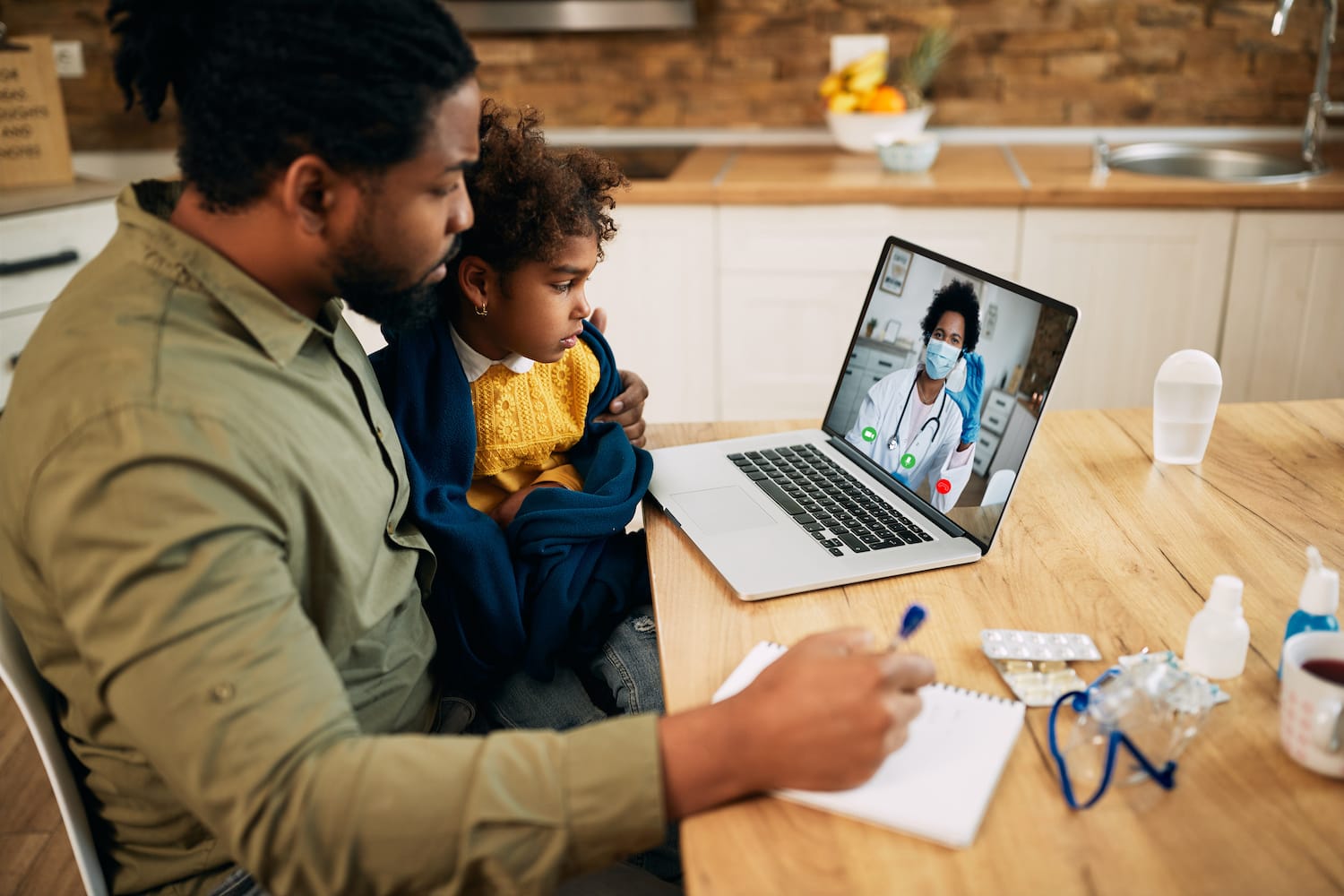
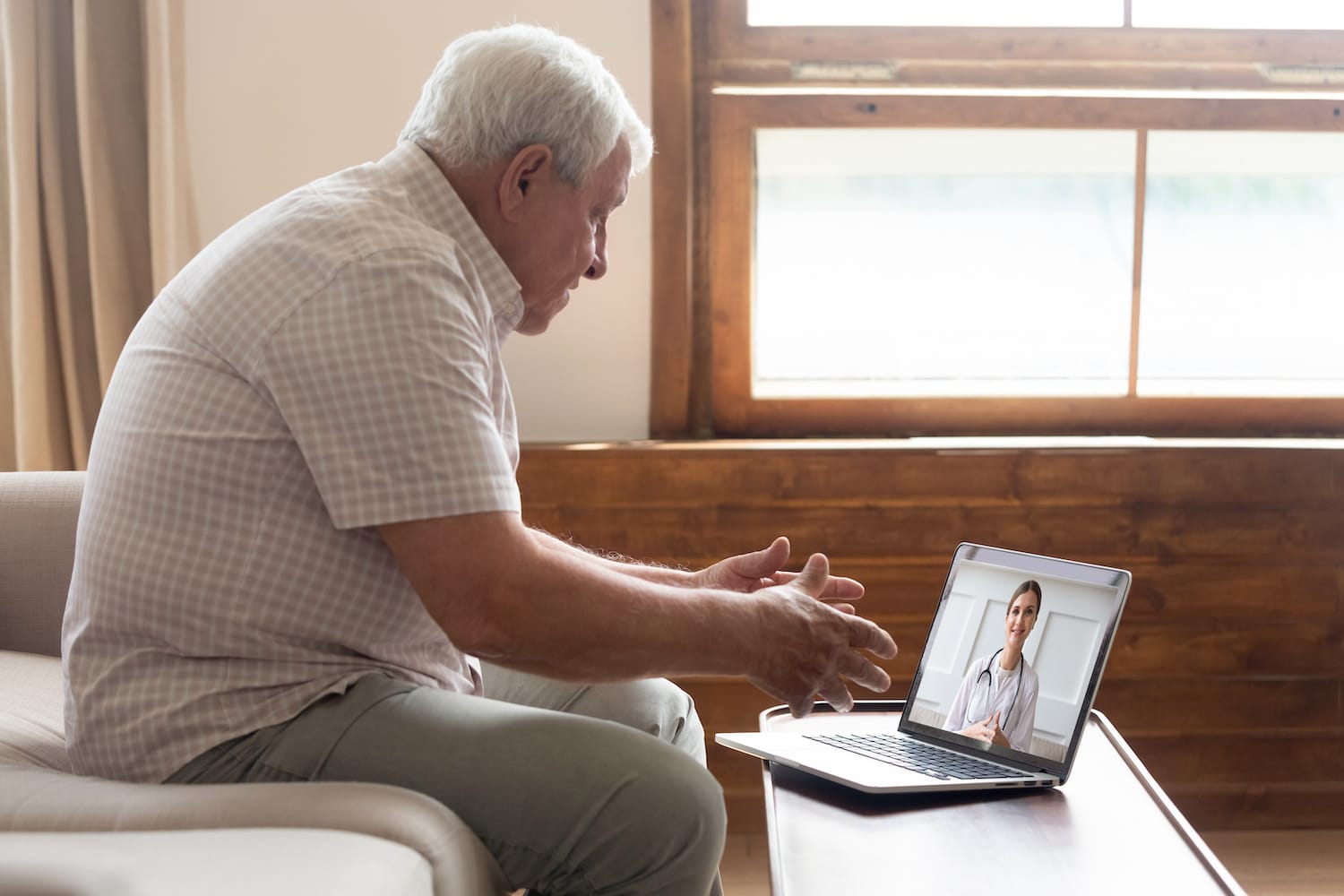



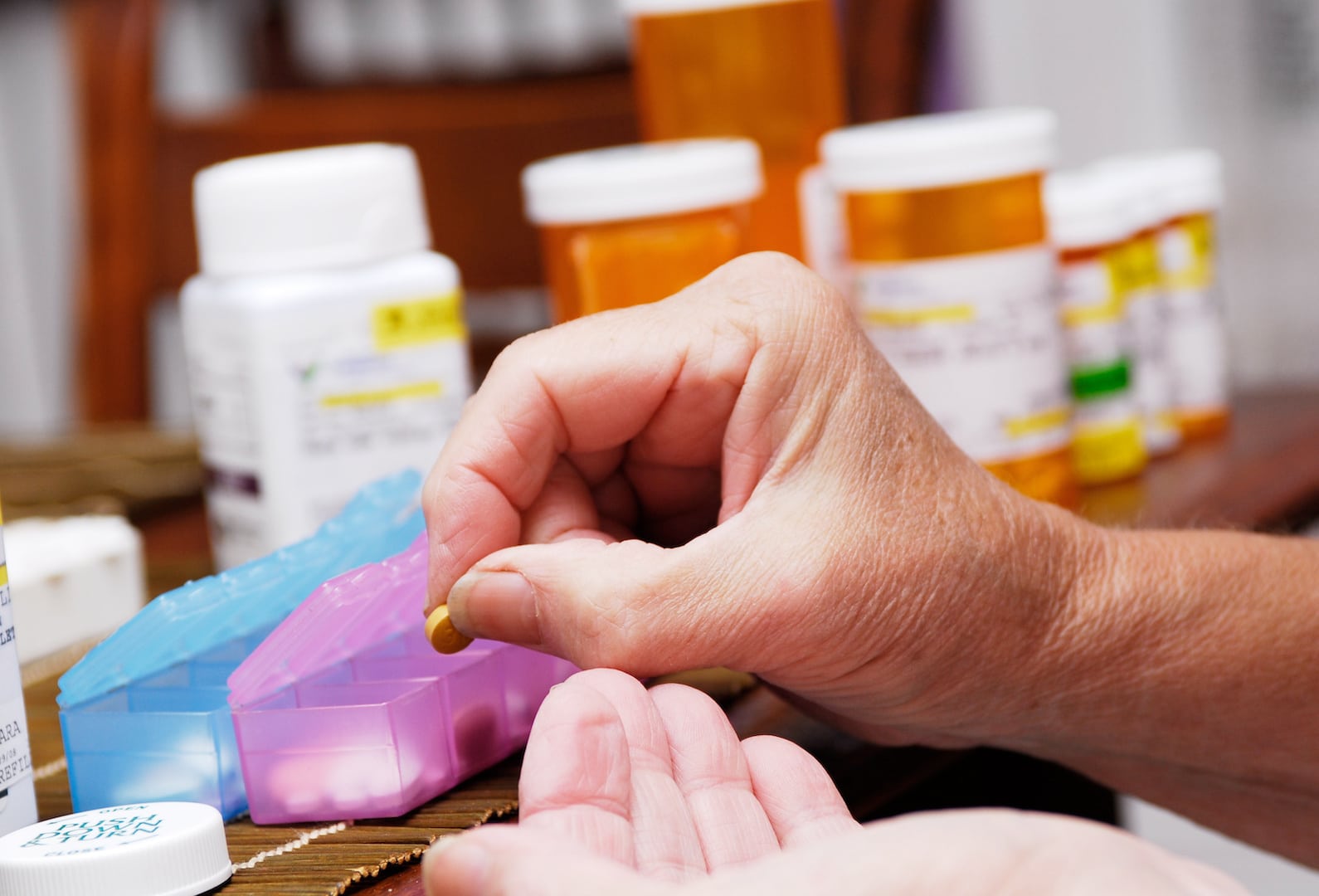

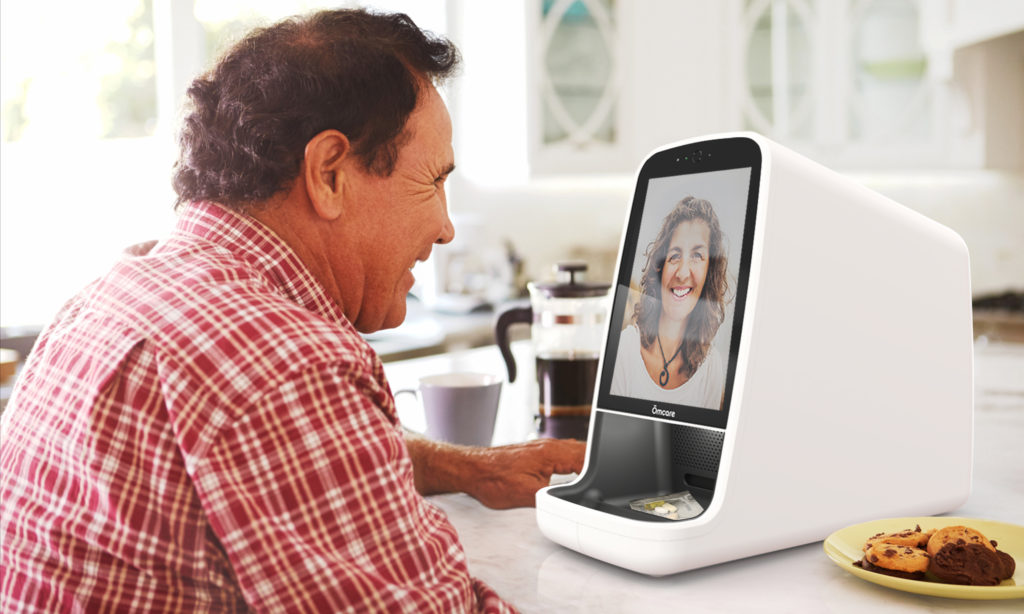

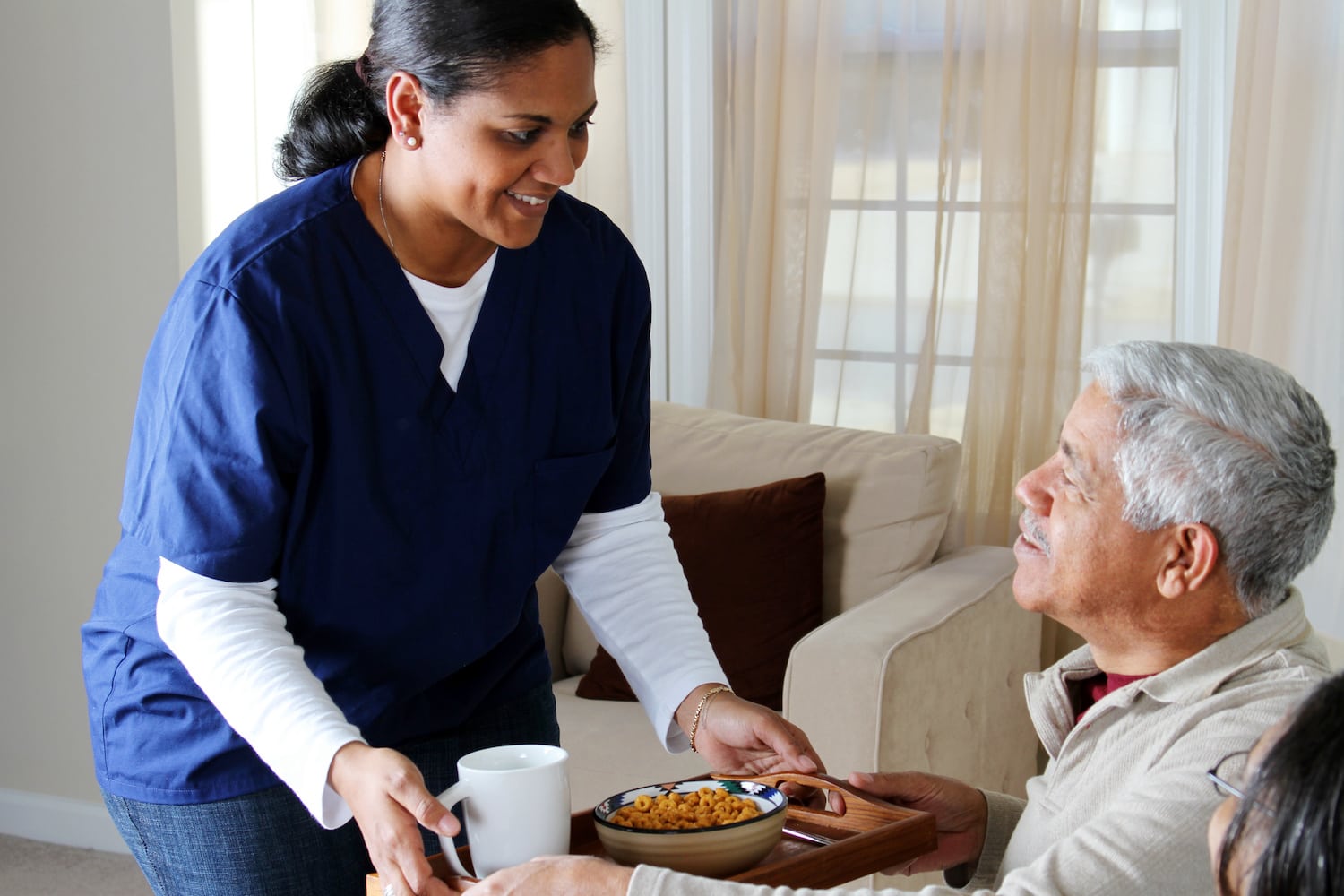


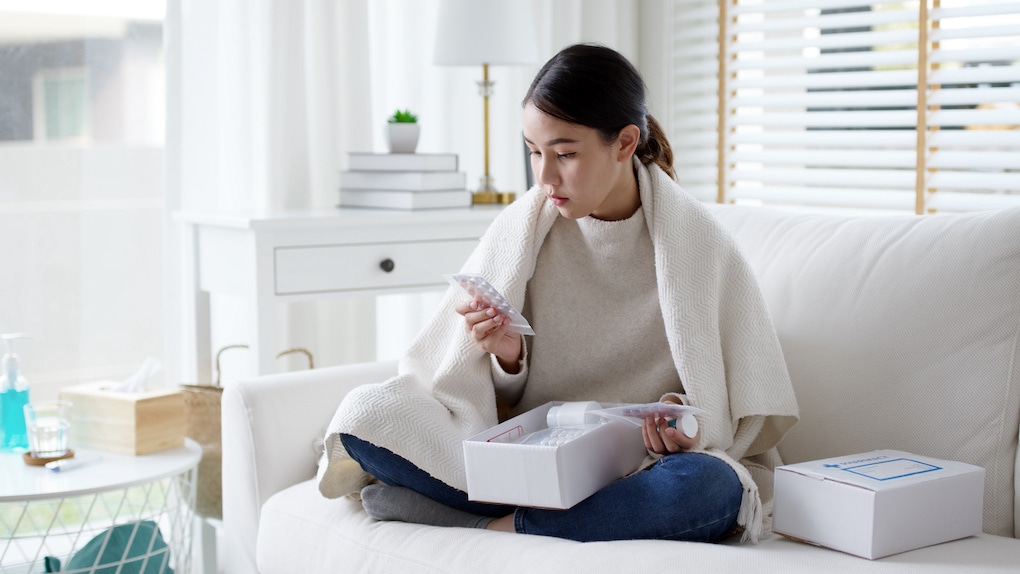
 Finding the Best for You
Finding the Best for You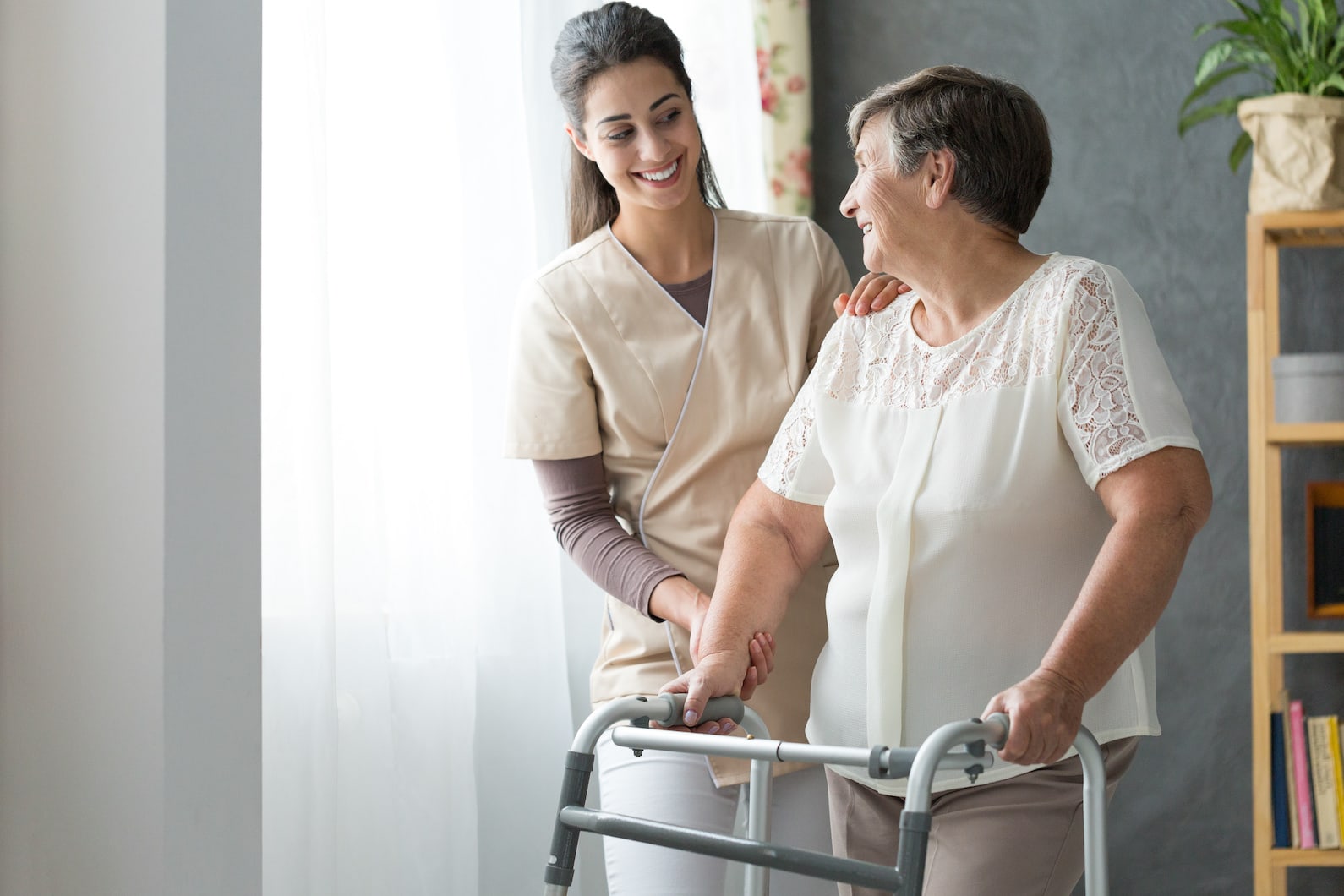




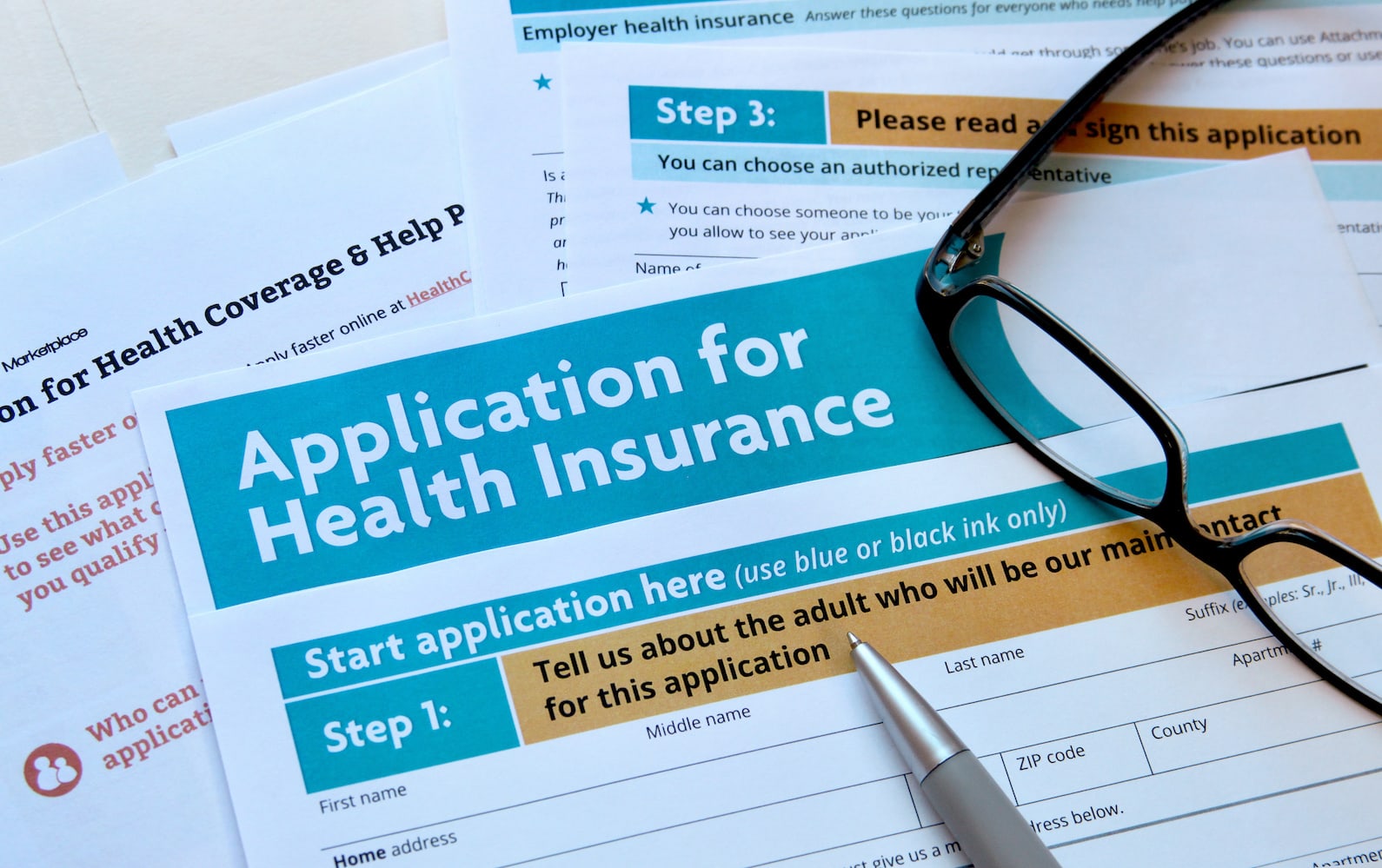

 HCC — Hierarchical Condition Category
HCC — Hierarchical Condition Category Risk Adjustment and Healthcare
Risk Adjustment and Healthcare

